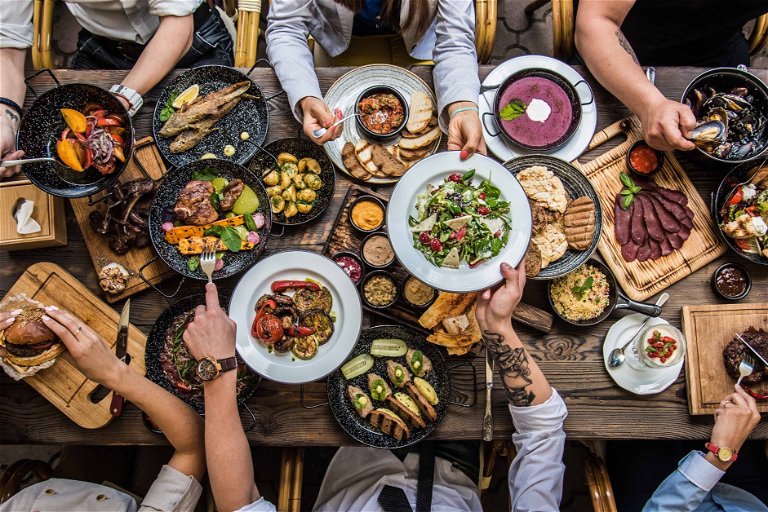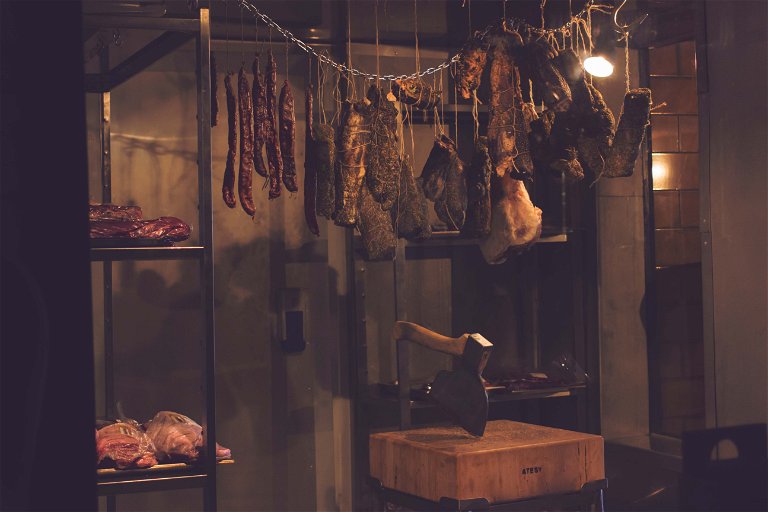Food in the future: are we still allowed to eat meat?
Soon there will be nine billion of us, and almost all of us still want to enjoy more meat. How is this supposed to work out, especially when cattle are rightly seen as a particular climate polluter and pigs as an environmental polluter? Ways out of the dilemma.
Anyone who drove through Salzburg's Lungau region last summer could see them everywhere on the green mats and lush alpine pastures, up here in the deliciously fresh mountain air, gorging themselves on aromatic herbs and grasses before lying comfortably in the sun to chew their cud and digest their food. A cow like this is a special wonder of nature. Nothing but eating grass, but a real hulk of an animal! Where does all this come from?
It really is fascinating. Because only very few creatures are able to generate energy from grass. For a person who can do almost anything, this is completely impossible. The cow, on the other hand, grows into a more than stately creature weighing more than a tenth of a kilogram and, as if by chance, gives tens of litres of milk a day. When it comes to slaughtering, there are hundreds of kilos of the very best meat on the scales. It is therefore all the more surprising that the animals are now found less and less often in their traditional environment, on the pasture.
Pasture grazing sounds like a fabulous method for getting really good meat in a sustainable way. And science has found that cattle fed on grass and hay produce significantly less methane and CO2 in their multiple stomachs than those fed with concentrated feed. Because the subsidies make this method superficially cheaper for farmers, cattle are increasingly only allowed out to pasture in exceptional cases - which is why you see them less and less in the open.
Instead, they are fed corn, grain and other concentrated feed, for which their digestive system is not designed. The dreaded methane farts are the result, as well as inflammation of the liver, which can only be controlled with antibiotics.

The main thing is that the schnitzel tastes good?
It's not much different with Austria's favourite meat, the pig; the excrement from millions of slaughtered animals is a problem for the environment, not to mention the ethical issue of confining these intelligent, social animals in cramped stalls that do not meet their needs in any way. But the main thing is that the schnitzel tastes good.
The perceived human right to any amount of cheap meat will not be sustainable in the long term. But how can we turn our diet in a direction that causes less damage to the climate and the environment but at the same time does not mean a loss of enjoyment and joie de vivre? How can we indulge in good food without permanently fuelling the climate catastrophe and violating the basic right to species-appropriate breeding?
Perhaps a look back will help. It wasn't so long ago that the ancient pact between humans and farm animals (safety, a species-appropriate life and regular feed here - milk, meat, fur and lard there) was still respected by both sides. During this time meat was only served in festive portions on feast days. On the other days, meat and animal protein were also cooked, just to a lesser extent. In dishes that are all part of the national repertoire, from cabbage rolls to stuffed peppers, from bacon dumplings to pancake soup to carnival doughnuts, bones and lard are essential ingredients and regarded as valuable animal foods.

In the Far East, where meat consumption is increasing rapidly, it is no different. The culinary tradition there is also full of delicious dishes in which meat tends to be the main ingredient.
From "Mapo Tofu" to "Yu-Xiang - Melanzani Sichuan-style" to "Ganbian beans" or "Dandan noodles" and, of course, all kinds of stuffed dumplings, meat and spices are used as a tasty filling.
In Italy, it has always been like this: the wonders of Cucina Povera are either completely vegetarian or, as with the Friulian cabbage and bean soup, the all-Italian minestrone, the Piedmontese "Bagna Cauda" or the Neapolitan Arancini (and even more so the pizza!), only with comparatively minimal use of spicy fish and meat.
No one will deny that all these delicacies are outstanding food. It's no secret that after eating them you get up from the table much more exhilarated and, in the truest sense of the word, stronger than after a knuckle of pork, beef roulade or Tournedo Rossini. Nobody wants to put a stop to enjoyment with bans. In truth, it's about the opposite: recognising that real enjoyment can only be that which not only makes you feel great in the short term, but also allows for the continued existence and well-being of our habitat, the earth. With this in mind: enjoy your meal!
Don't miss out!
Sign up now for our newsletter.


